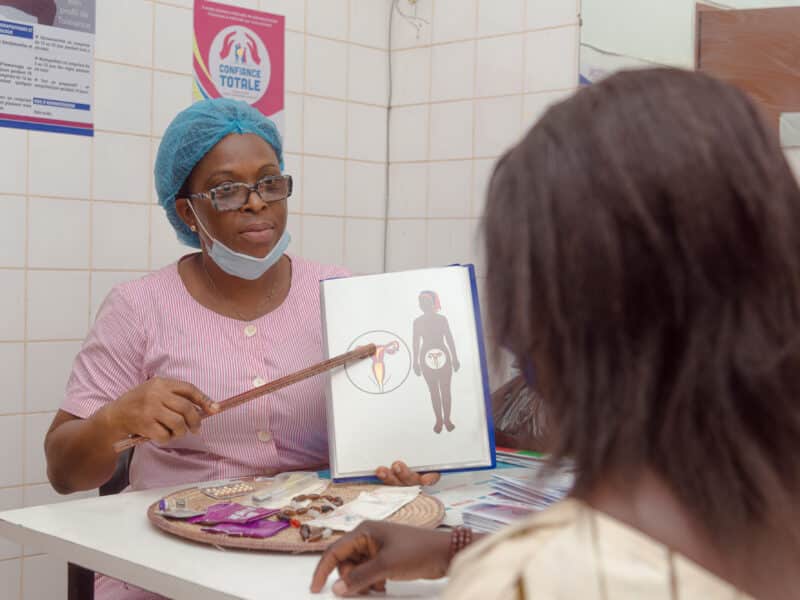Nearly half a million people die each year from malaria, a preventable and treatable condition. Bed nets are an accessible, cost-effective and proven method to reduce malaria infection, yet bed net use varies widely between communities. A number of cultural, social, and environmental factors impact bed net use and other preventive behaviors. Strategies to address these factors and encourage adoption of bed net use need to first address an individual’s ideation, that is, how and what they think about a proposed behavior change.
In recent years, the field of health communication has moved beyond the traditional view of “communication as a one-time, one-way communicative ‘act’” and towards the idea of communication as a “multilevel dialogue with the public that unfolds over time.” Also, in several domains of public health, notably reproductive health and malaria prevention, there is growing demand for predictive models of change at the individual level that result in improved population level health outcomes. Predictive models are particularly useful as guides to program planning and investment.
Ideation is one such predictive model of behavior change.The concept was first introduced in a seminal 1987 demographic study by John Cleland and Christopher Wilson, and later refined by CCP and others. Cleland and Wilson argued that people’s thinking about family size and fertility changes over time and that these new ways of thinking spread through communication within social networks, but they never explained how to measure the concept. CCP researchers developed measures of ideation that include a cluster of inter-related psycho-social variables, such as attitudes about the health issue, perceived behavioral norms, perceived risk of disease, emotional response to an issue, self-efficacy to protect oneself and one’s family and social influences in one’s family and community. These function like risk-factors for disease, but in a positive way: the more of these factors a person has working in his/her favor, the greater the likelihood of positive behavioral decisions.
These ideational factors help define what should be measured during a program’s formative research phase. In the context of malaria, this might mean: what do people perceive about bed net use norms among their peers; how do they perceive the risk of contracting malaria; what do they think are the benefits of net use; who in the family or community influences household net use? Measuring these factors can help determine which are most strongly correlated with the changes in behavior the program is targeting, and thus what topics should be the focus of the programs’ messages.
CCP researchers developed measures of ideation that include a cluster of inter-related psycho-social variables, such as attitudes about the health issue, perceived behavioral norms, perceived risk of disease, emotional response to an issue, self-efficacy to protect oneself and one’s family and social influences in one’s family and community.
Numerous CCP studies have shown that ideation is a reliable indicator of whether individuals will practice recommended behaviors in the health areas of family planning, water, sanitation and hygiene (WASH) and HIV/AIDS interventions, but the model has not historically been applied to malaria preventive behavior. Recently, CCP’s research team analyzed survey data from multiple epidemiological malaria transmission zones in Madagascar, Liberia and Nigeria, studying people’s knowledge, beliefs, and attitudes relating to net usage and other malaria prevention behaviors. This research identified ideation variables that affect people’s behaviors around net usage, including:
- awareness of where to get nets,
- perceived self-efficacy to use nets properly,
- attitudes about the benefits of net use (both personal and societal),
- discussion with others about net use,
- feeling that it is not a taboo to use a net, and
- confidence in the ability of bed nets to prevent transmission of malaria.
By adding up the number of positive ideational factors a person reports in a survey, researchers and program designers are able to calculate and individual’s ideation score. The higher the number, the higher the person’s level of ideation and the higher the likelihood of adopting that behavior.
Results from these malaria surveys align with findings in other health areas. They reveal a positive relationship between high levels of ideation and behavior change, which indicates that the ideation model is a valid predictor of bed net use. They further demonstrate that the use of the ideation model can help to identify the combination of individual and contextual factors relating to bed net use that should be addressed in a strategic communication program. Once an intervention has been designed to address the most important ideational factors, the model can be used to evaluate the intervention and verify the effectiveness of the strategy. This tightens the links between strategic planning, program design and program implementation, resulting in more effectively targeted communication activities, and ultimately to better health outcomes.
This post was written by J. Douglas Storey, PhD, CCP’s Director of Communication Science and Research.
[highlight2]Read more about CCP’s groundbreaking research in communication.[/highlight2]





